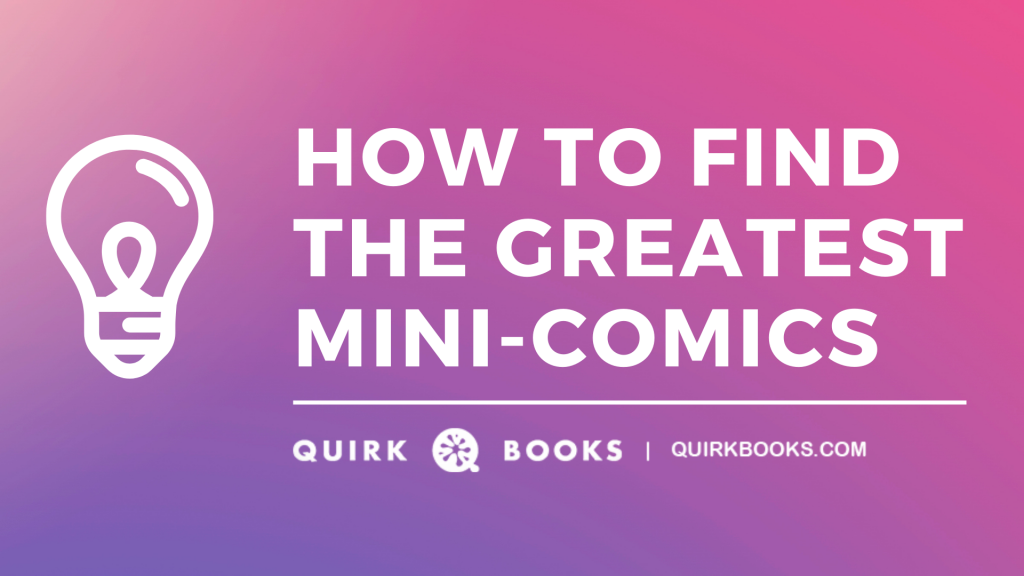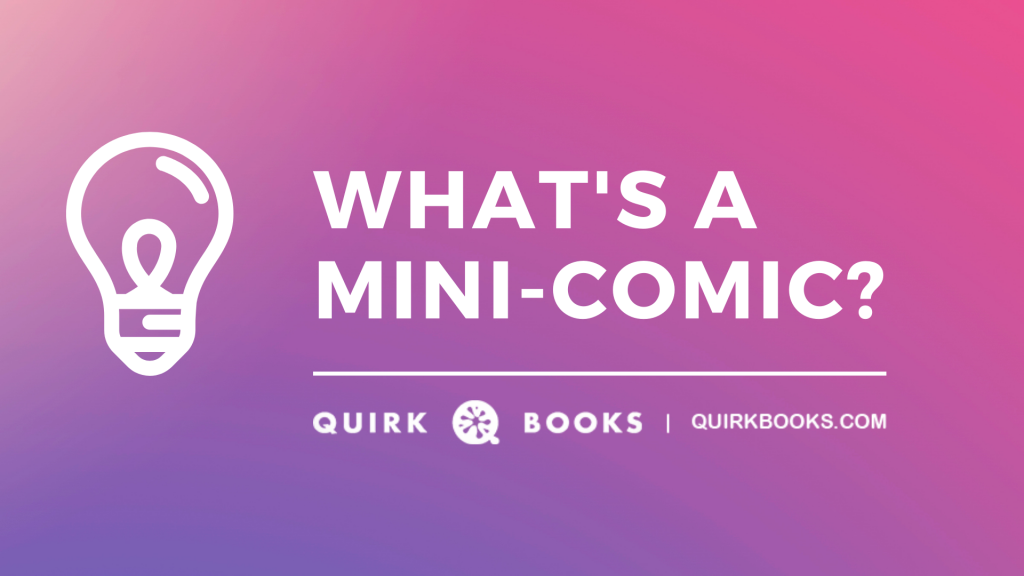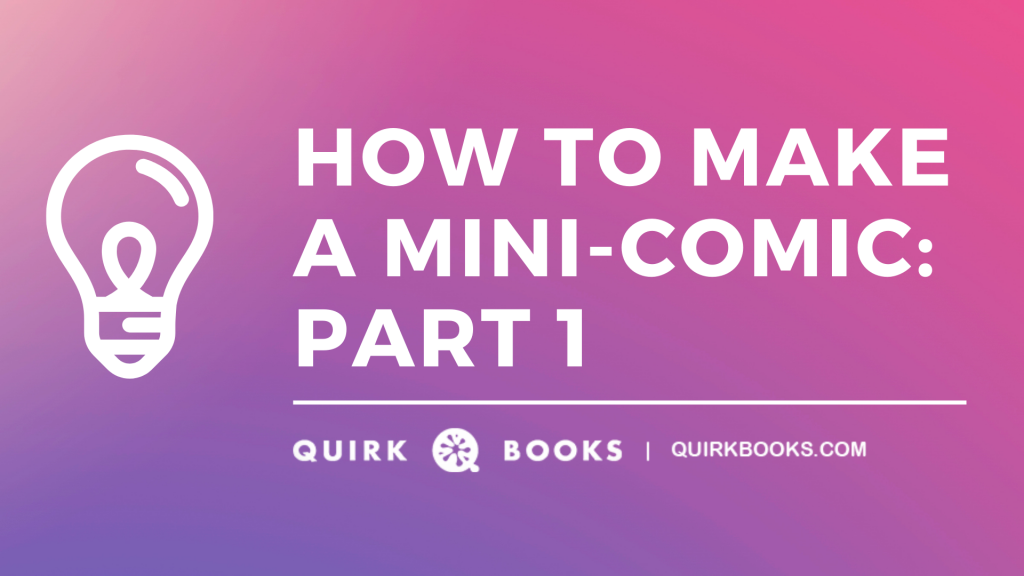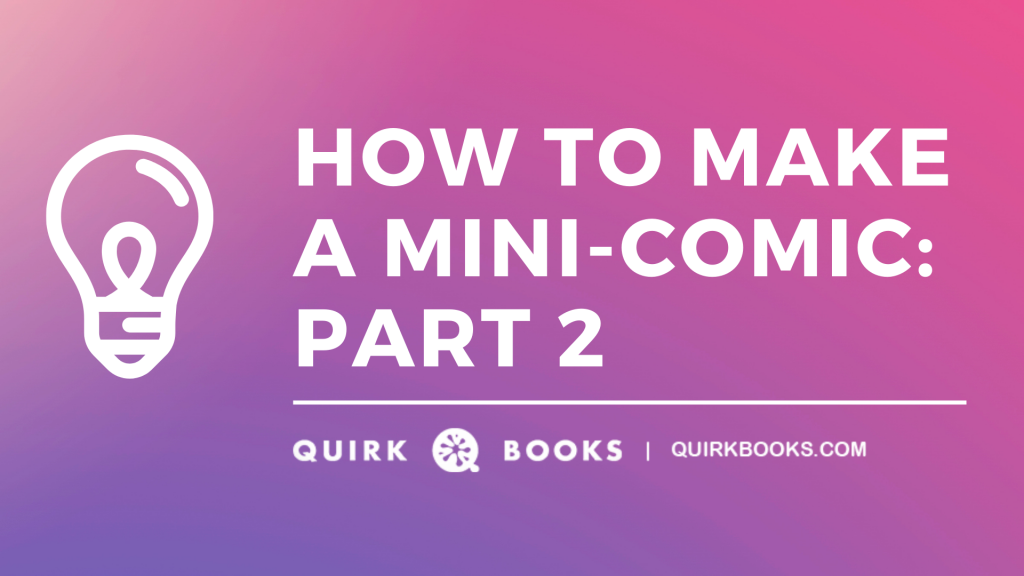Mini-Comics: The Wrap-Up
We've discussed why mini-comics are so amazing and how you can find your next favorite mini-comic, but have we said everything there is to say about mini-comics? Of course not! We hope we’ve given you enough motivation to explore the mini-comic universe further, but here's one more approach to making a mini-comic of your own.
Making Multi-Sheet Mini-Comics
We’ve told you how to make a mini-comic from a single sheet of paper here and here. But if you want your minis to have more pages, and to be structured more like full-size comics or little books, here are two methods to try, using multiple sheets of paper. How many sheets? You decide!
Multi-Sheet Mini-Comic Version 1: Saddle Stitching
If you’ve ever picked up a comic book in your life, you’ll get how this works. You just print your pages—two on each side of a sheet of paper—fold them in the middle, and stack them on top of each other like so:

Then staple everything together in the middle of the sheets. Depending on the size of the paper you’re using, you may need an extra-long stapler. (Some creators use sewing or other methods to attach the pages.) One thing to keep in mind with this scheme: When you put your art onto the sheets of paper, your pages have to be ordered so they’ll fall into the right sequence. For example, a three-sheet mini-comic (two pages of art on each side of the paper=six pages total) would need this arrangement:

Make a dummy so you can see where everything goes…or get use to pages being out of order.
Multi-Sheet Mini-Comic Version 2: “Perfect” Binding
This approach mimics that of a perfect-bound paperback book—the single pages are fastened along one side, except that in this case they’re stapled instead of glued (usually…but various mini-comics creators have used adhesives and every other method under the sun at some point, so feel free to experiment.) You just print your comic as single pages, stack them up in order, and the staple the side together. The more pages you have, though, the harder it will be to staple. And remember to leave extra space along the edge so the stapling doesn’t block your images.

For a more in-depth tutorial on making mini-comics, we refer you again to Jessica Abel’s excellent guide.
Thanks for sharing your love of mini-comics with us. To inspire us all, let’s wrap things up with a final survey of outstanding mini-comics, selected by the Quirk Comics Club.

A horizontal format is put to great use in this untitled story of a sailing ship by Alexis Frederick-Frost.
Don't be square: An oval shape is the perfect fit for a story of sinister bunnies by Rachel Bard.
Mind-Mapping by Will Dinksi unfolds in a mind-bending way.
Cutouts in this cool cover by David Mack practically demand that you open the book.
The cover of Hope Larson's Put On A Brave Face ties together with yarn; the interior has even more surprises.
The Beast Mother by Eleanor Davis is bigger than most minis, with a suitably tense cutout cover.
Mini-comics displayed are from the personal collections of Quirk Books Comics Club members and are intended as a small and subjective sampling of the ever-expanding universe of mini-comics.
















